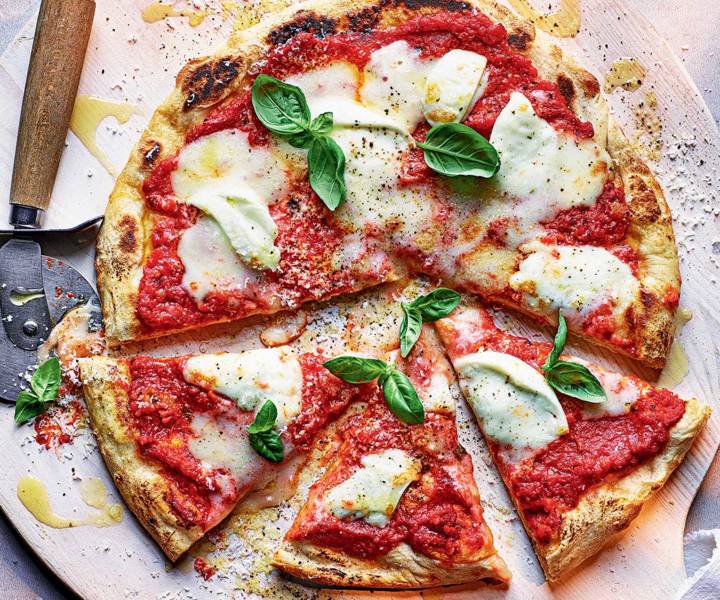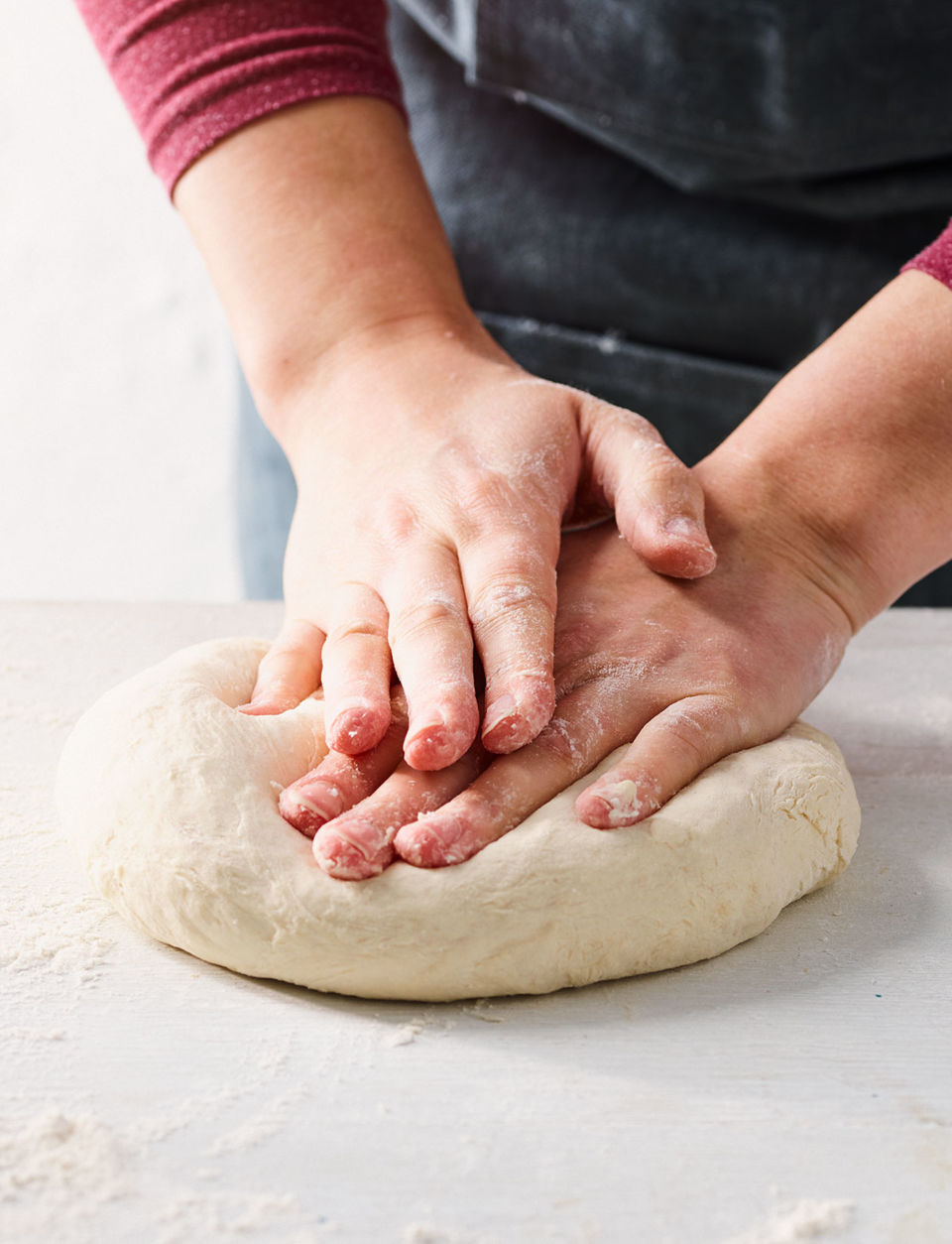Food
Pizza margherita: master the classic takeaway favourite at home
by Nadine Brown

Become your own pizzaiolo and create an authentic version of this Naples staple at home (with just a couple of cheats). It’s easier than you’d think…
Growing up in the 80s, a highlight for me would be a visit to the most sophisticated of all restaurants – Pizza Hut. You had the sleek red glasses to sip your fizzy drinks and that salad bar. And then, the pizza. Huge discs of doughy wonder, spread with sweet tomato sauce, molten cheese and a variety of toppings, from pepperoni to pineapple. Of course, I soon learned these pizzas were somewhat inauthentic, an Americanised take on a beloved Italian dish. But traditional versions are just as delicious and, perhaps most importantly, a doddle to make at home too.
What is a margherita pizza?
In Naples, where the dish is said to come from, pizza making is considered an art form. The craft of Neapolitan pizza is even recognised by Unesco as an Intangible Cultural Heritage of Humanity – highlighting its importance as a cultural and social practice. Pizza margherita is the most famed – a light, thin crust, baked until starting to char on the edges, topped with tomato sauce, mozzarella and basil.
Did you know?
In Naples, where the dish is said to come from, pizza making is considered an art form. It’s even recognised by Unesco as an important cultural and social practice
What is typically on a margherita pizza?
As with any recipe that uses minimal ingredients, quality is essential. I spoke with Michele Pascarella, an award-winning pizza maker and author of Napoli on the Road (Ryland, Peters & Small, £22), who believes tomatoes are the most important ingredient on a pizza. Traditionally, fresh San Marzano tomatoes, a variety of plum tomato grown in the Campania region of Italy, would be used. Problem is, they’re tricky to get hold of in the UK, and let’s be honest, there are better ways to spend your time than blanching and peeling a kilo of them. Enter, the premium tinned tom that Michele approves of – Mutti. ‘They offer a classic Italian flavour that is rich, naturally sweet and perfectly balanced in acidity,’ he says. He also suggests only adding salt, but I’m a sucker for some herby flavours, so I like to simmer my tomatoes with dried oregano and aromatics like garlic and onion. Other than tomatoes, all that’s left to add is some mozzarella, fragrant basil, a drizzle of oil and a sprinkle of parmesan.

What is the secret to making good pizza dough?
For flour, ‘00’ is the gold standard. It creates a crisp outer crust due to its higher protein content, but if you sneak in some plain flour it helps give a welcome chewiness. Once you’ve combined your ingredients, you might be tempted to prove your dough for an hour or so, but Michele suggests taking it further. ‘It’s generally better to let the dough prove overnight. As a general rule of thumb, allowing 12 to 16 hours of fermentation gives the best results in terms of flavour and texture.’ With my recipe, I offer both options: for if you have the time or need something speedier for a late-planned pizza night. Once you’ve got your mozzarella on, it’s on to the pizza stone, if you’re lucky enough to have one. If you’re baking without, Michele’s handy tip is to simply bake on the bottom side of a large, heavy, hot baking tray.

Ready to have a go?
Get the recipe for pizza margherita












